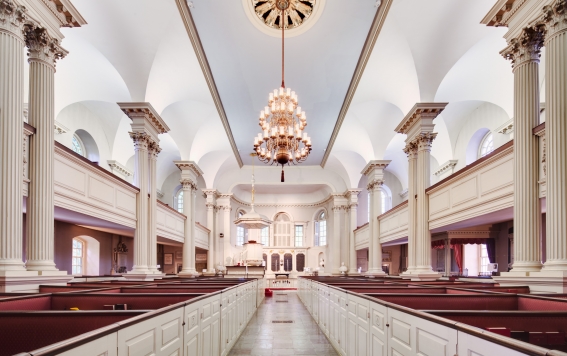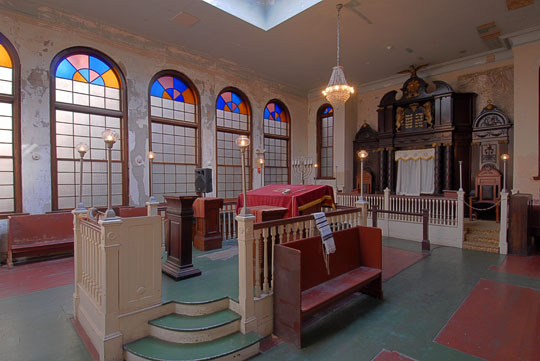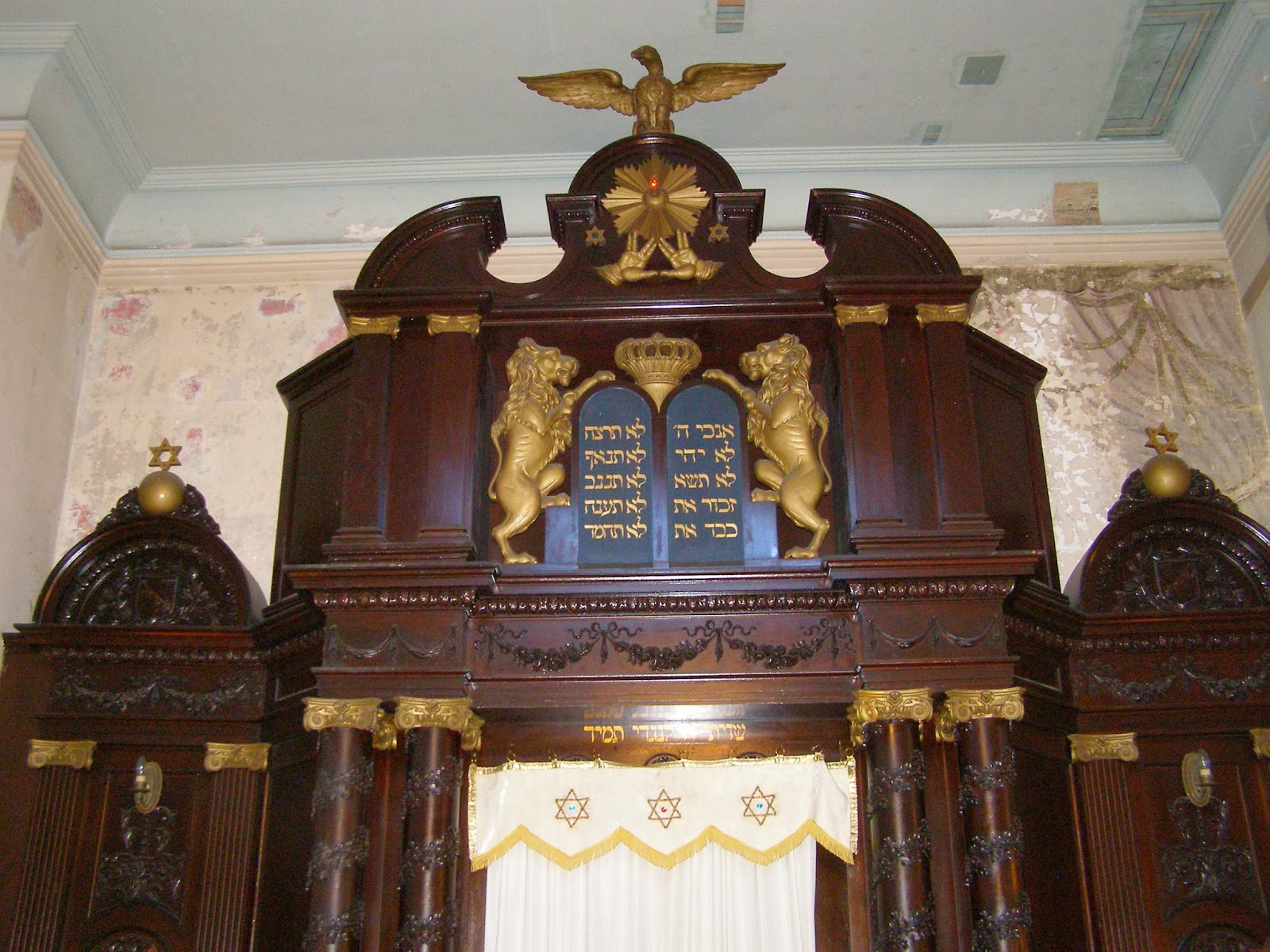Religious New England
Historic houses of worship tell important stories, often touching on issues like immigration and politics in addition to religious history. Two contrasting sites we visited in Boston, King’s Chapel and the Vilna Shul, illustrated the unique significance of historic religious sites that are still actively used by their congregations, and the contributions of such sites to their broader communities today.
King’s Chapel exterior, as viewed from Tremont Street. Source: Wikipedia
First, our group visited the King’s Chapel in Boston, where a fascinating and extensive tour took us through a religious, architectural, social, and political history of early Boston – from the depth of the crypts beneath the church to the Paul Revere bell that still rings from the church’s top. Opened in 1754, the stone structure, today in the bustling center of Boston, provided our group a strong introduction to the history it witnessed. Still often referred to by locals as the “Loyalist Church,” King‘s Chapel indeed had ties to England as an early Anglican presence in the heart of Puritan New England, and served a generally very wealthy congregation, many of whom were loyalists during the Revolution.
A view of the King’s Chapel interior, with pews lining both sides. Source: www.theclio.com
However, our tour guide complicated that narrative by explaining that both patriots and loyalists worshiped at King’s Chapel during the war; we even saw in the crypts where two prominent families – one loyalist and one patriot – were buried across from one another. More recent interpretation here has also looked to include the stories of free and enslaved black members of the congregation. The “loyalist” church that rings Paul Revere’s bell thus tells a complex story of the role houses of worship played as gathering places and centers of sometimes surprisingly diverse communities.
The interior of Vilna Shul reveals both the condition and enduring use of the space. Source: http://www.alamy.com
Next the group headed to the Vilna Shul, an originally-Orthodox synagogue in Boston’s historic Beacon Hill neighborhood, built in 1919. Like King’s Chapel, the Vilna Shul is a historic, material survival of religious, social, and architectural significance with deep relevance to the present. A relatively modest structure representative of the types of synagogues built by immigrant communities across the east coast, the Vilna Shul is undergoing restoration. Today visitors can enjoy amazing folk murals revealed through conservation that cover the walls of the synagogue.
Only a bit of the painted mural “curtains” are left on the wall behind the Ark. Source: http://www.alamy.com
One of the Vilna Shul’s most gripping stories for visitors is that of Boston’s Jewish immigrant community and the ways they expressed a dually Jewish and American identity in their synagogue. For instance, the Ark (pictured above) features fascinating and beautiful ornamentation that would likely puzzle the ancestors of the worshippers who built it, but which beautifully reflected its newly-American congregation. Carved shells speak to a New England aesthetic rather than a traditionally Jewish one, shellfish being considered unclean in the Jewish tradition. The gilded eagle perched at the top of the Ark clearly embraces an American decorative arts culture, as well. Worshippers sat in recycled Baptist pews, the crosses that once adorned their ends removed but still faintly visible. The Vilna Shul’s material culture tells a fascinating and deeply important story of immigration and identity in America, which today is shared with Jews and non-Jews alike.
Both King’s Chapel and the Vilna Shul serve two roles today as houses of worship and as museums which share the history of people and place for diverse audiences. Balancing the needs of worshippers with the interests of tourists surely presents challenges, but continued use also adds layers of stories to these sites: their history is still unfolding.
For more information on historic preservation efforts at houses of worship, see http://sacredplaces.org .
By Candice Roland Candeto, WPAMC Class of 2018





Leave a Reply